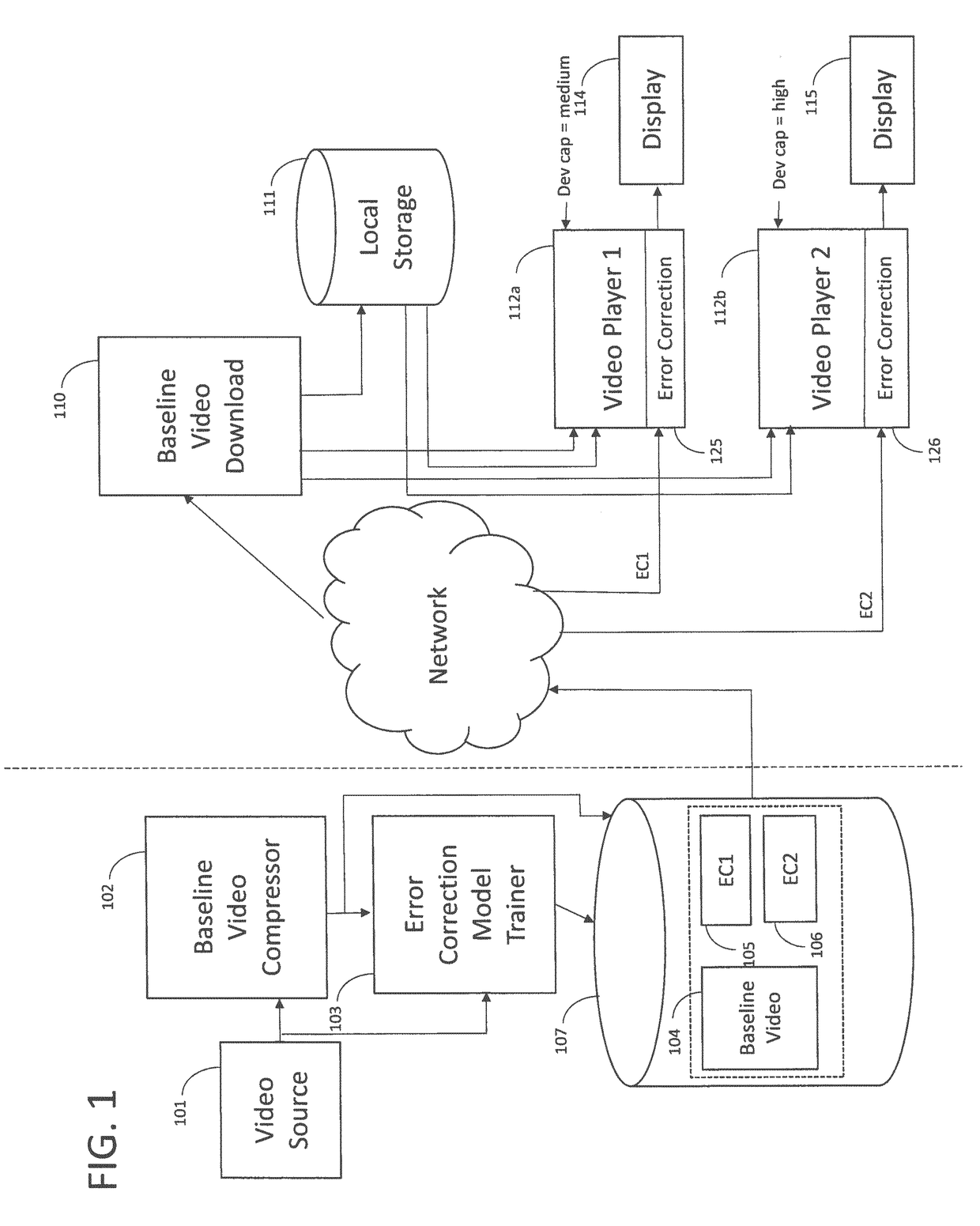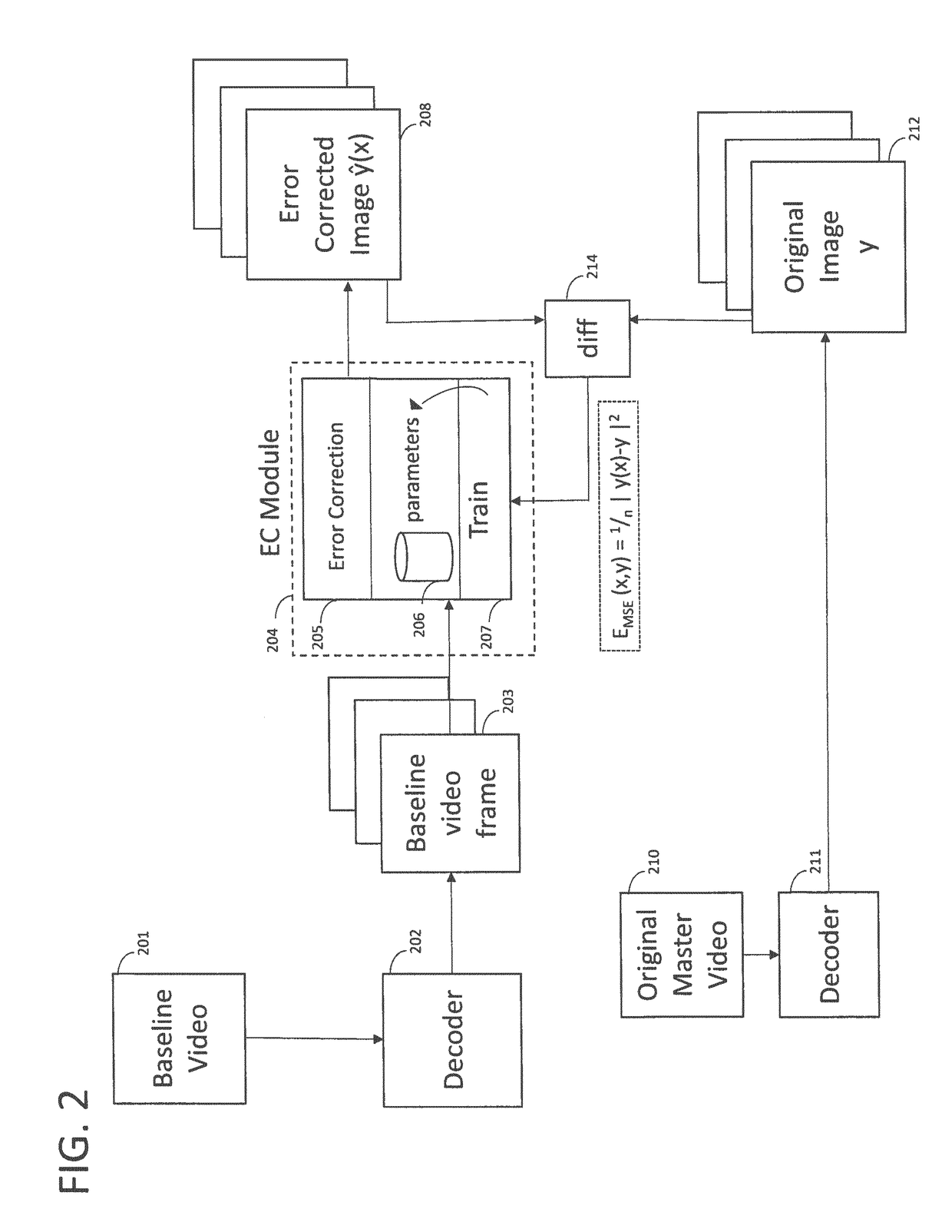Improved video stream delivery via adaptive quality enhancement using error correction models
a technology of error correction model and adaptive quality enhancement, applied in the field of multimedia stream delivery, can solve the problems of visual quality degradation, increase the resources needed for providing such a video service, poor image quality, etc., and achieve the effect of reducing errors, reducing resolution, and reducing the number of errors
- Summary
- Abstract
- Description
- Claims
- Application Information
AI Technical Summary
Benefits of technology
Problems solved by technology
Method used
Image
Examples
Embodiment Construction
[0045]FIG. 1 illustrates in schematic form the manner in which information is processed in accordance with an example according to the invention. As will be described in more detail below, some of the structures and functions illustrated in FIG. 1 represent optional functionality that need not be present in all implementations of the invention.
[0046]Source videos in their “master” format enter the system from a video source denoted by reference numeral 101.
[0047]The source videos are first compressed by a compressor using a baseline compression profile denoted by reference numeral 102 into “baseline” videos. A video datastore denoted by reference numeral 107 includes a baseline video store denoted by reference numeral 104, to which the baseline videos from the baseline video compressor 102 are stored.
[0048]The baseline video compressor 102 uses industry-standard video compression codecs with the parameters chosen to target the “baseline” playback experience as determined by the impl...
PUM
 Login to View More
Login to View More Abstract
Description
Claims
Application Information
 Login to View More
Login to View More - R&D
- Intellectual Property
- Life Sciences
- Materials
- Tech Scout
- Unparalleled Data Quality
- Higher Quality Content
- 60% Fewer Hallucinations
Browse by: Latest US Patents, China's latest patents, Technical Efficacy Thesaurus, Application Domain, Technology Topic, Popular Technical Reports.
© 2025 PatSnap. All rights reserved.Legal|Privacy policy|Modern Slavery Act Transparency Statement|Sitemap|About US| Contact US: help@patsnap.com



